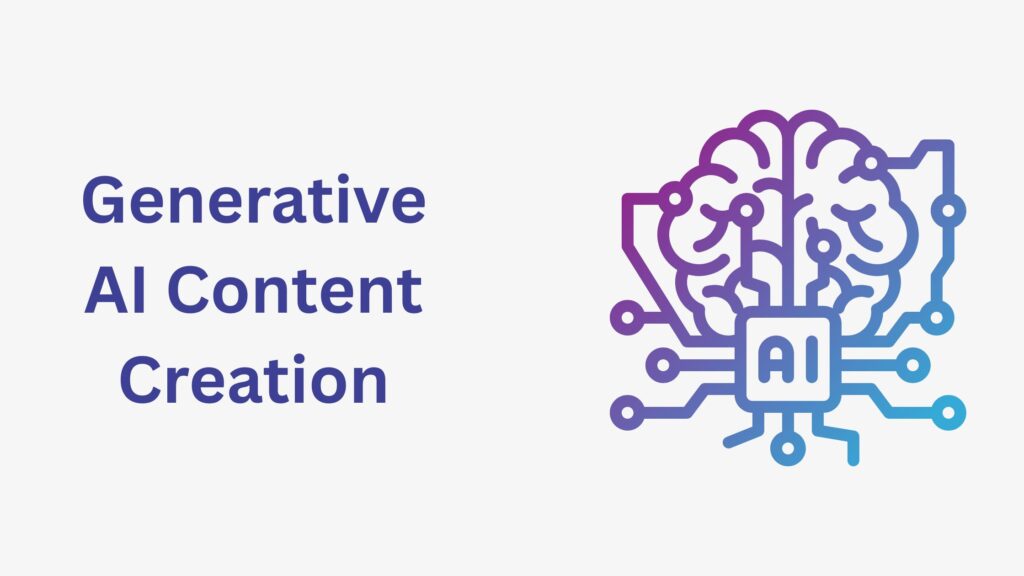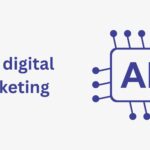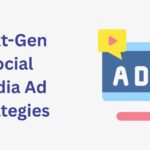Generative AI is rapidly redefining how content is planned, created, and distributed in digital marketing—especially for beginners aiming to get quick, measurable results in 2025. This listicle outlines 15 essential use cases, best practices, and top tools, along with key compliance tips to help you succeed without risking Google penalties.
What Is Generative AI in Content Marketing?
Generative AI refers to advanced machine learning systems that autonomously generate high-quality text, images, videos, and more for digital marketers. Unlike traditional tools, generative AI learns from vast datasets and adapts, making it ideal for automating content creation, personalizing campaigns, and predicting trends.
Why Beginners Should Use Generative AI for Marketing
-
Save time and cut costs by automating content production across social media, blogs, ads, and more.
-
Deliver personalized experiences at scale—just like Netflix or Spotify—with dynamic product recommendations and messaging.
-
Boost SEO and user engagement by optimizing content for keywords, structure, and search trends identified by AI tools.
-
Improve ROI with AI-driven analytics, data analysis, and campaign optimization.
15 Generative AI Content Creation Use Cases for Digital Marketers
1. AI-Powered Blog and Article Writing
Generative AI (like Jasper, Writesonic, or ChatGPT) instantly drafts full-length articles, listicles, and how-to guides. Beginners can use them for brainstorming, outlining, or writing first drafts, then edit for brand voice and quality.
Best practice: Add your unique insights and human touch; don’t just copy-paste AI outputs. Review for originality and accuracy before publishing.
2. Automated Social Media Posts and Scheduling
AI tools generate engaging social media copy across platforms like Facebook, Instagram, and LinkedIn. Many platforms now suggest hashtags, optimal posting times, and even generate relevant images.
3. Personalized Email Campaigns
Feed campaign goals and audience segments to AI—get customized email subject lines, body text, or CTAs automatically tailored to user behavior and interests. AI helps craft personalized product recommendations, cart abandonment reminders, and more.
4. Dynamic Product Descriptions and Ads
E-commerce brands use AI to instantly generate SEO-rich product listings, banners, and ad creatives—reducing the need for manual copywriting and constant A/B testing.
5. Instant Video and Image Generation
AI-powered tools (like Synthesia or Adobe Firefly) help marketers produce explainer videos, YouTube shorts, and campaign banners in a fraction of the time. Add custom avatars or use text prompts to create visual assets for campaigns.
6. Automated Keyword Research and SEO Optimization
Use Generative AI (such as Surfer SEO, Frase.io) to:
-
Uncover trending keywords in your industry
-
Recommend headings and meta tags
-
Optimize for long-tail, conversational queries (great for voice search and AI interfaces)
-
Suggest the best content formats (listicle, FAQ, how-to).
7. Topic Ideation and Trend Forecasting
AI crunches vast datasets to identify new content opportunities and predicts what topics will be popular next, so marketers can stay ahead of the curve.
8. Automated Content Briefs and Outlines
AI tools quickly pull key points, summarize research, and structure outlines—saving beginners countless hours on prep work for new content.
9. On-Page SEO Enhancement
Generative AI analyzes your content and recommends on-page changes—like adding images, improving readability, or restructuring sections—to boost rankings and user experience.
10. Email and Link Outreach at Scale
AI tools compose targeted outreach emails for backlinks and collaborations, analyzing recipient preferences and recent content for higher response rates.
11. Chatbots and Personalized Customer Support
AI-powered chatbots engage visitors 24/7, answer FAQs, recommend products, and provide tailored support—offering a seamless, scalable brand experience.
12. A/B Testing and Conversion Optimization
AI automatically runs and analyzes split tests for landing pages, ads, or emails—helping marketers fine-tune their messaging and layouts for higher conversions.
13. Content Translation and Localization
Translate blog posts, ads, or landing pages for new markets with AI. Some tools adapt tone and intent for cultural differences, not just literal meaning.
14. Voice and Conversational Content Generation
With the rise of voice search and digital assistants, AI helps brands create conversational scripts, FAQs, and responses tailored for voice-driven platforms.
15. Deep Data Analytics and Predictive Insights
Generative AI uncovers customer behavior trends, segments audiences, monitors campaign performance, and predicts what actions will drive the best results—all from a single dashboard.
Compliance: How to Follow Google’s 2025 AI Content Guidelines
Google’s latest rules reward high-quality, people-first AI content while penalizing “thin” or robotic content. To avoid penalties:
-
Blend human editing with AI speed. Always review, improve, and inject unique brand insights.
-
Cite trustworthy data and use authoritative sources. Link out to official resources, case studies, and recognized industry sites when possible.
-
Show E-E-A-T: Build content that demonstrates Experience, Expertise, Authoritativeness, and Trustworthiness.
-
Avoid manipulative/keyword-stuffing techniques. Focus on value and user intent, not tricks.
-
Implement structured data and schema markup (HowTo, FAQ) for richer search listings and easier AI crawling.
For more details, see Google’s official Search & AI Content Guidelines (https://developers.google.com/search/docs/fundamentals/using-gen-ai-content) and Google Search Central Blog (https://developers.google.com/search/blog/2023/02/google-search-and-ai-content).
The Best Generative AI Tools for Digital Marketing
| Tool | Best For | Website |
|---|---|---|
| Jasper | Copywriting & blog automation | https://www.jasper.ai |
| Surfer SEO | SEO content optimization | https://www.surferseo.com |
| Synthesia | AI video creation | https://www.synthesia.io |
| Adobe Firefly | Image and video design | https://www.adobe.com/firefly |
| Chatfuel | Social media chatbots | https://chatfuel.com |
| Frase.io | Research and content briefs | https://www.frase.io |
| Albert.ai | Paid ad optimization | https://albert.ai |
All external links above point to reputable, official service providers per Google guidelines.
Expert Tips for Beginners: How to Get Started
-
Focus on 1–2 core AI tools at first; master them before expanding.
-
Always edit AI-generated content for clarity, accuracy, and voice.
-
Prioritize value for your readers—solving real problems, not just ranking for keywords.
-
Regularly audit your content for accuracy, freshness, and engagement signals.
-
Stay active on social platforms, forums, and Q&A sites for multi-surface visibility—not just Google.
Frequently Asked Questions
Is generative AI content allowed by Google?
Yes, as long as the content follows Google’s E-E-A-T principles, is original, and delivers genuine value.
How can I avoid thin-content penalties?
Ensure every AI-generated piece is reviewed, fact-checked, and offers new insights or practical solutions—not just summaries or listicles copied from elsewhere.
Can generative AI replace human marketers?
No. AI is a multiplier for speed and scale, but human oversight is essential for quality, creativity, and compliance. The best results come from blending both.
Conclusion
Generative AI is empowering even beginner marketers to create, distribute, and optimize impactful content at unprecedented scale. By adopting the above strategies and tools—and following Google’s compliance rules—digital marketing teams can boost performance, save time, and build deeper customer relationships in 2025 and beyond.


